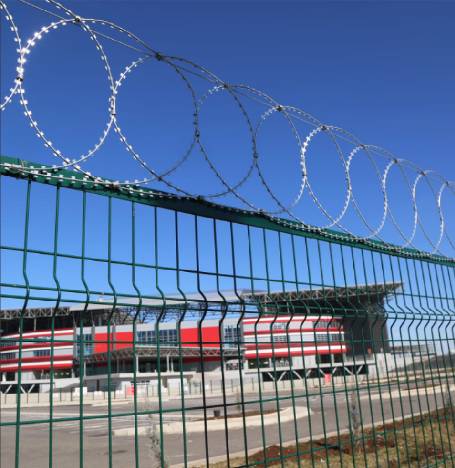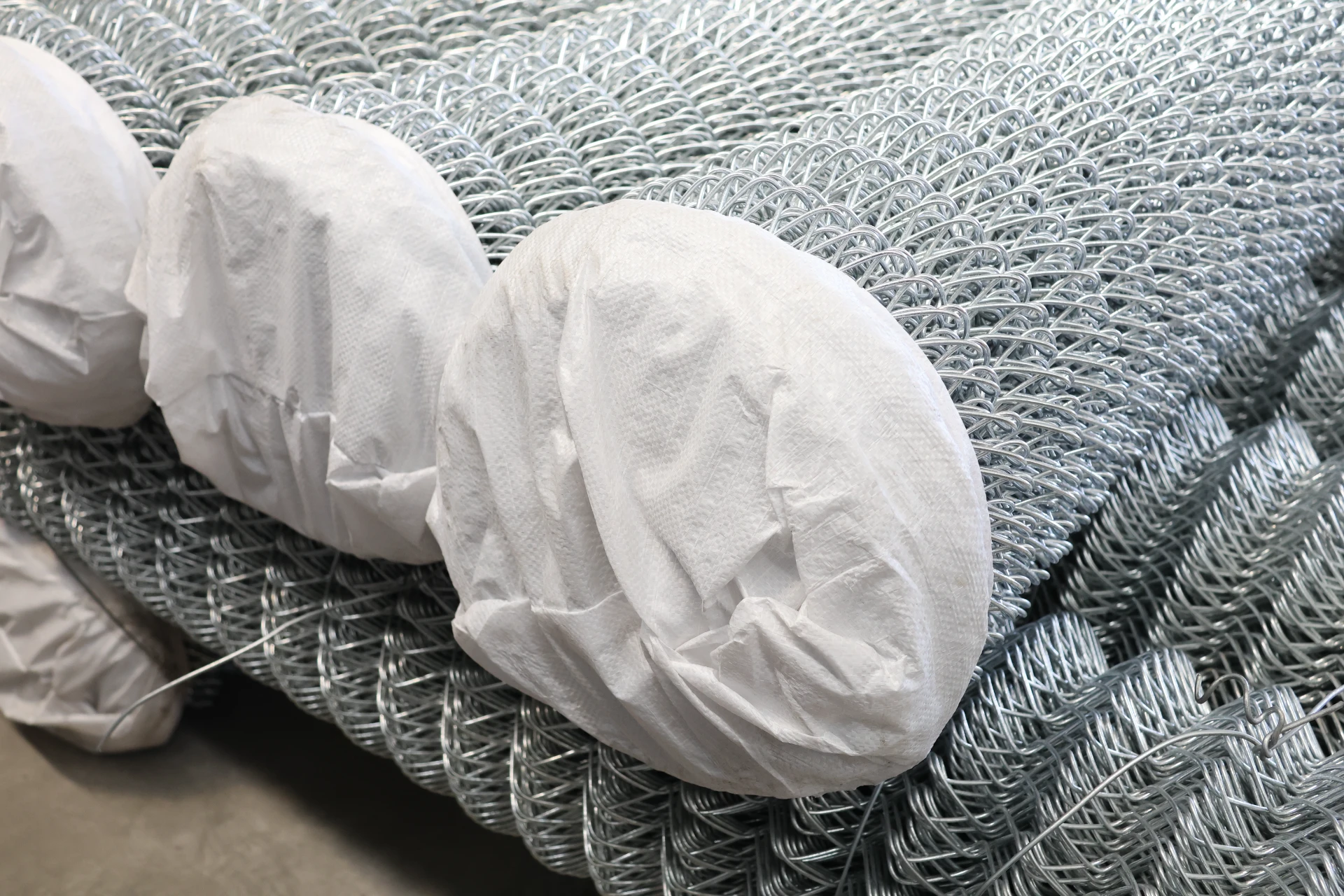Premium Wholesale Hexagonal Netting for Gardens & Fencing
- Market Demand Analysis and Growth Projections
- Technical Superiority and Performance Metrics
- Manufacturer Capability Comparison
- Customization Specifications and Process
- Industry-Specific Implementation Cases
- Installation Protocols and Maintenance Practices
- Future Market Positioning Strategies

(wholesale hexagonal netting)
Understanding Wholesale Hexagonal Netting Fundamentals
Hexagonal wire netting, characterized by its distinctive six-sided aperture pattern, serves as a versatile solution across multiple industrial sectors. Its structural integrity stems from the twisted wire configuration which creates a flexible yet resilient mesh. Galvanization remains the predominant surface treatment, with Class III galvanized coatings providing corrosion protection exceeding 8 years in standard environmental conditions. Alternative treatments include PVC coating (0.4mm-0.7mm thickness) and Galfan alloy applications, offering protection longevity up to 15 years.
The manufacturing process incorporates automated welding systems that maintain consistent wire diameter tolerances within ±0.05mm. Production capacities typically range from 15,000 to 80,000 square meters monthly, depending on factory scale and automation levels. Material specifications commonly utilize BWG 22-27 gauge wire, with mesh openings from 1/2" to 4" accommodating diverse application requirements. Production verification follows ASTM A641 standards, with dimensional variance kept under 3% across batches.
Market Demand Analysis and Growth Projections
Global consumption patterns indicate consistent annual market expansion of 4.6% over the past five years, largely driven by infrastructure development programs in emerging economies. Current market valuation stands at approximately $1.72 billion, with Asia-Pacific regions accounting for 43% of total demand. Construction applications represent 60% of usage volume, while agricultural applications have shown 12% year-over-year growth since 2020. Industry analysts project poultry fencing applications to increase by 18% before 2028 due to intensified livestock management regulations.
Raw material procurement fluctuations significantly influence production economics, with recent wire rod price variations impacting wholesale quotes by ±8.5%. Major infrastructure projects scheduled through 2030 are projected to consume over 250 million square meters of heavy-duty hexagonal wire netting globally, requiring manufacturing output expansion of at least 35% from current industry capacity. Inventory turn ratios for wholesale distributors average 4.2 annually, with seasonal demand peaks coinciding with regional construction cycles.
Technical Superiority and Performance Metrics
Comparative analysis reveals distinct advantages versus alternative containment solutions. Hexagonal structures exhibit 27% greater yield strength than equivalent chain link configurations when subjected to lateral pressure loads. The mesh geometry allows deformation recovery of up to 92% after impact testing according to EN 10223-3 protocols. Environmental resistance testing shows Class III galvanized hexagonal mesh maintains structural integrity after 1000 hours of salt spray exposure - 300 hours longer than standard welded wire panels.
Material science advancements have introduced hybrid alloys incorporating titanium micro-additives that increase fatigue resistance by 40%. Recent innovations include double-twist hexagonal configurations that enhance flexibility while maintaining dimensional stability under tension loads exceeding 850 N/mm². The cellular structure provides 70% more contact surface area per square meter compared to rigid fencing alternatives, improving load distribution and enhancing impact absorption characteristics.
Manufacturer Capability Comparison
| Manufacturer | Production Capacity | Certifications | Lead Time | Minimum Order | Export Ratio |
|---|---|---|---|---|---|
| Galvamet Industrial | 65,000 m²/month | ISO 9001:2015, CE | 18 days | 500 m² | 82% |
| MeshPro Global | 42,000 m²/month | ASTM A641, ISO 14001 | 25 days | 300 m² | 67% |
| TecWire Solutions | 78,000 m²/month | ISO 9001, BSCI | 15 days | 1000 m² | 91% |
Third-party quality audits reveal TecWire Solutions maintains the tightest dimensional tolerances at ±2.3% versus industry average of ±4.7%. Galvamet Industrial leads in sustainability metrics with 78% recycled material utilization and reduced wastewater discharge of 12 m³/tonne of product. Production defect rates across manufacturers average 1.2% though best-performing facilities achieve rates below 0.8% through automated optical inspection systems.
Customization Specifications and Process
Bulk ordering permits extensive parameter modifications while maintaining cost-efficiency. Mesh opening variations support ±0.5mm precision down to 8mm hexagonal apertures for specialized applications. Selvedge treatments include double-twist wire reinforcements for high-tension applications or knuckled edges for enhanced safety profiles. Specialized specifications such as 3.0mm PVC coating with UV stabilizers extend outdoor service life beyond 15 years while maintaining flexibility ratings.
Manufacturing timelines for specialized orders typically add 6-8 days to standard production schedules with digital prototyping capabilities accelerating confirmation processes. Minimum viable order quantities for customized specifications begin at 800m² with premium surcharges under 22% for specialty applications versus stock programs. Sampling protocols ensure conformation to requested parameters prior to full-scale production with sample approval cycles averaging 72 hours.
Industry-Specific Implementation Cases
Transport infrastructure projects increasingly utilize hexagonal wire netting for slope stabilization, with a recent 34km highway project incorporating 120,000m² of 80x100mm mesh with 2.7mm wire diameter. Aquaculture applications require specialized zinc-aluminum alloy coatings to withstand brackish water environments - a Vietnamese shrimp farm documented 14% higher yield retention using specialized hexagonal mesh containment systems.
Mining operations benefit from rockfall protection solutions using gabion baskets constructed from PVC-coated hexagonal wire netting. One Chilean copper mine reduced containment system maintenance by 40% after switching to 4mm gauge wire with corrosion-resistant treatment. Agricultural applications demonstrate longevity advantages with poultry enclosures maintaining structural integrity beyond 8 years versus replacement cycles of 4-5 years for conventional fencing solutions.
Critical Considerations for Wholesale Hexagonal Netting Procurement
Strategic sourcing decisions require comprehensive evaluation beyond per-unit pricing. Volumetric freight calculations significantly impact landed costs - container optimization approaches can reduce shipping expenses by 18% through specialized rolling techniques. Payment security mechanisms should include pre-shipment verification audits and third-party quality certification services. Established suppliers typically offer consignment stock programs at distribution hubs maintaining 90,000m² of buffer inventory for major markets.
Future industry advancements include IoT-enabled mesh systems incorporating corrosion monitoring sensors and automation-compatible attachment systems. Material science research indicates new nano-coating formulations could extend service life beyond 25 years in harsh environments. Ongoing production efficiency improvements suggest potential 5-8% cost reductions annually over the next procurement cycle while maintaining performance specifications.

(wholesale hexagonal netting)
FAQS on wholesale hexagonal netting
What factors influence the price of wholesale hexagonal netting?
Q: What determines the cost when purchasing wholesale hexagonal netting? A: Pricing depends on wire gauge, material (galvanized or PVC-coated), and mesh size. Bulk orders typically lower the per-unit cost, and international shipping fees may affect final quotes for large shipments.What common applications exist for wholesale hexagonal wire netting?
Q: Where is wholesale hexagonal wire netting typically used? A: It serves as poultry fencing, garden protection, and slope stabilization. Construction sites use it for concrete reinforcement, while aquaculture employs it for pond and cage systems due to its durability.Is there a minimum order quantity for wholesale hexagonal wire mesh?
Q: Do suppliers require bulk purchases for wholesale hexagonal wire mesh? A: Yes, MOQs vary by supplier but often start at 50-100 rolls. Some factories offer tiered discounts for larger quantities, with MOQs negotiable for custom projects or repeat clients.Can I request customized specifications for wholesale hexagonal netting orders?
Q: Are customization options like size or coating available? A: Absolutely. Suppliers typically accommodate custom wire gauges (e.g., 19-27 gauge), mesh openings (1/2" to 3"), and coatings (PVC colors). Provide technical drawings for tailored solutions and faster quotes.Why choose wholesale over retail for hexagonal wire mesh?
Q: What are the benefits of buying hexagonal wire mesh wholesale? A: Wholesale purchases reduce costs by 20-40% through bulk pricing. Distributors also offer logistics support for large shipments and provide consistent quality across high-volume orders.-
Space-Saving Chain Fence Hacks Vertical Gardening with Cyclone MeshNewsJul.16,2025
-
Innovations in Iron Nail Wire Production for Modern ConstructionNewsJul.16,2025
-
Creative Uses of Wire Netting Fence in Modern Landscape DesignNewsJul.16,2025
-
Barbed Wire Fence Innovations in Anti-Climb TechnologyNewsJul.16,2025
-
Architectural Uses of Umbrella Nails for Aesthetic Roof DesignsNewsJul.16,2025
-
Architectural Uses of Razor Barbed Wire in Secure Urban DesignNewsJul.16,2025




